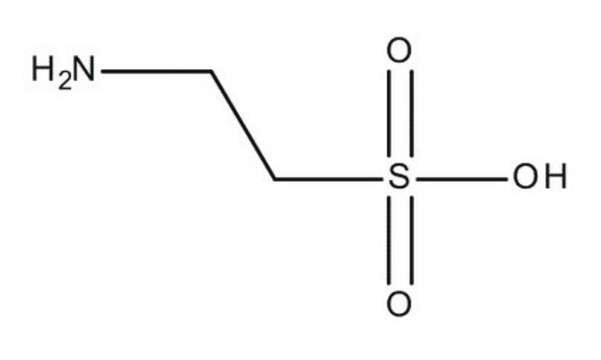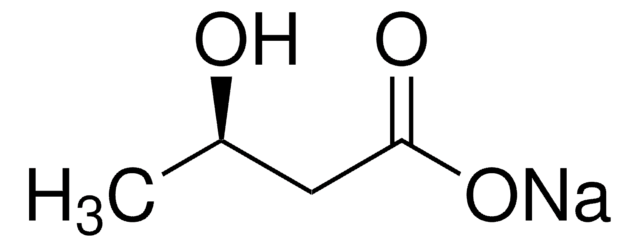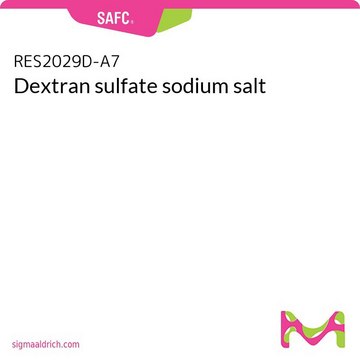T4571
Taurina
Produzione farmaceutica
Sinonimo/i:
Acido 2-amminoetanosolfonico
About This Item
Prodotti consigliati
Origine biologica
non-animal source
Livello qualitativo
Saggio
≥98.5%
Stato
crystalline powder
tecniche
cell culture | mammalian: suitable
Impurezze
endotoxin, heavy metals, trace metals, tested
Punto di fusione
>300 °C (lit.)
Solubilità
H2O: ≥100 mg/mL
Attività estranea
cytotoxicity, tested
Stringa SMILE
NCCS(O)(=O)=O
InChI
1S/C2H7NO3S/c3-1-2-7(4,5)6/h1-3H2,(H,4,5,6)
XOAAWQZATWQOTB-UHFFFAOYSA-N
Informazioni sul gene
rat ... Ppm1a(24666)
Cerchi prodotti simili? Visita Guida al confronto tra prodotti
Descrizione generale
M-Clarity Program
Our comprehensive portfolio of upstream process chemicals not only provides biopharmaceutical manufacturers with high-quality raw materials for production of classical and novel therapies, but also helps them get to market faster and simplify regulatory challenges. Trust us to deliver supply chain transparency and reliable sourcing around the globe, streamlining your product qualification with best-in-class regulatory support and service.
Applicazioni
Azioni biochim/fisiol
Note legali
Codice della classe di stoccaggio
11 - Combustible Solids
Classe di pericolosità dell'acqua (WGK)
WGK 2
Punto d’infiammabilità (°F)
Not applicable
Punto d’infiammabilità (°C)
Not applicable
Dispositivi di protezione individuale
dust mask type N95 (US), Eyeshields, Gloves
Scegli una delle versioni più recenti:
Possiedi già questo prodotto?
I documenti relativi ai prodotti acquistati recentemente sono disponibili nell’Archivio dei documenti.
I clienti hanno visto anche
Il team dei nostri ricercatori vanta grande esperienza in tutte le aree della ricerca quali Life Science, scienza dei materiali, sintesi chimica, cromatografia, discipline analitiche, ecc..
Contatta l'Assistenza Tecnica.








